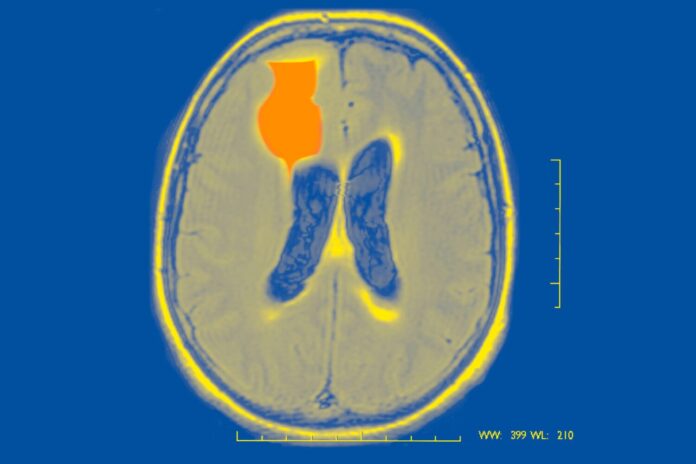Epilepsy is one of the most common neurological disorders globally, affecting approximately 50 million people. The condition is characterized by recurrent, unprovoked seizures, which can be both unpredictable and disabling.
With the rapid rise in technology, however, there are now various advancements that aim to improve the quality of life for individuals living with epilepsy. This article delves deep into the realm of these technological marvels and how they are reshaping epilepsy care.
The Essence of Seizure Detection
Seizure detection forms the crux of epilepsy care. For patients and caregivers, being forewarned about an impending seizure can help them take the necessary precautions.
Traditional seizure detection primarily relied on visual observations and video-EEG monitoring. While these methods have their merits, they have limitations, including requiring constant human intervention or being restricted to a clinical setting. Seer Medical advice if you experience any concerning symptoms.
Modern technological solutions harness the power of wearable devices, real-time monitoring, and data analytics to offer more nuanced and precise detection methods.
These devices, often in the form of wristbands or headgear, measure a variety of physiological parameters like heart rate, body temperature, and muscle movements. By analyzing these parameters in real time, these devices can predict or detect an ongoing seizure, thereby alerting the patient or caregivers.
The Power of Seizure Prediction

Imagine being able to forecast a seizure, much like how meteorologists predict the weather. This is no longer the realm of science fiction, but a reality being shaped by the confluence of big data, machine learning, and neurology.
By collecting vast amounts of patient data, including EEG patterns, sleep cycles, and even lifestyle habits, algorithms are being trained to recognize the subtle changes that precede a seizure.
These algorithms continually learn and adapt to each patient’s unique neurological pattern. While still in its nascent stages, the ability to predict seizures can be transformative. It can provide patients with an invaluable window of time to seek a safe environment, notify someone, or even take preventive medication.
Remote Monitoring: Bridging Distances
Even with the best predictive tools at our disposal, the necessity for expert oversight remains paramount. Enter remote monitoring. With the ubiquity of smartphones and the internet, patients no longer need to be tethered to a hospital or clinic for constant monitoring.
Several platforms now allow neurologists to monitor their patients from afar. These platforms collect data from wearable devices or home-based EEG systems and transmit it to a secure cloud. Doctors can then access this data, analyze it, and make timely interventions, ensuring that patients receive the best care regardless of their geographical location.
Personalized Treatment Plans with AI
Artificial Intelligence (AI) is not just about robots and self-driving cars. In the realm of epilepsy care, AI is enabling the creation of personalized treatment plans tailored to the unique needs of each patient.
Traditionally, epilepsy treatments were often a matter of trial and error. Doctors would prescribe medications based on broad categorizations of epilepsy and adjust based on the patient’s response. With AI, this approach is being overhauled.
By analyzing a patient’s genetic makeup, neurological patterns, and even lifestyle factors, AI can suggest a treatment regimen that stands the best chance of success for the individual. This not only improves the efficacy of the treatment but also reduces the chances of side effects.
Virtual Reality: More Than Just Gaming

Virtual Reality (VR) is most commonly associated with gaming, but its application in epilepsy care is proving to be groundbreaking. One of the challenges in treating epilepsy is understanding the triggers. Each patient might have unique triggers, ranging from flashing lights to specific sounds.
Using VR, doctors can create controlled environments where they can safely expose patients to potential triggers, gauging their reactions in real time. This helps in understanding the triggers better and equipping the patient with coping mechanisms.
Additionally, VR can be used for therapeutic purposes, aiding patients in managing stress and anxiety, which are often linked to seizures.
Brain-Computer Interfaces: The Frontier of Treatment
Perhaps the most avant-garde of all technological advancements in epilepsy care is the development of Brain-Computer Interfaces (BCIs). These devices, implanted directly into the brain, can detect abnormal electrical activity and respond by delivering electrical impulses to counteract or stop a seizure.
BCIs essentially function as an internal regulator, maintaining the brain’s electrical equilibrium. While still in the experimental phase, early results are promising, with some patients experiencing significant reductions in seizure frequency and severity.
Telemedicine, though not entirely a new concept, has found a renewed impetus in recent years, especially during the global health crises when in-person consultations became a challenge. For epilepsy patients, this technological boon has been particularly advantageous. Regular check-ins with neurologists are essential for monitoring the condition, adjusting medications, and discussing any concerns.
With telemedicine, patients can have these consultations from the comfort of their homes, eliminating the need for frequent travel and reducing the associated stress. This is especially vital for those who live in remote areas or where specialist care is scarce.
Mobile Applications and Epilepsy Management

Smartphones have become an integral part of our lives, and their potential in health management is vast. Numerous mobile applications are now available specifically designed for epilepsy care. These apps allow patients to maintain a seizure diary, track their medication schedules, and even share real-time data with their doctors.
Some applications also incorporate features like reminders for medication, alerts for potential drug interactions, and educational resources about epilepsy. By having all this information at their fingertips, patients are empowered to take a proactive role in their care.
Neurostimulation Devices: A Glimpse into the Future
Beyond BCIs, other neurostimulation devices are also showing promise in epilepsy management. Vagus Nerve Stimulation (VNS) and Responsive Neurostimulation (RNS) are two such methods.
VNS involves sending regular, mild pulses of electrical energy to the brain via the vagus nerve. This can help prevent seizures and reduce their intensity when they occur. On the other hand, RNS involves monitoring the brain’s electrical activity and delivering electrical pulses directly to the source of the seizure onset, effectively interrupting the seizure before it can spread.
Both these methods offer alternatives to traditional drug therapies and can be especially beneficial for those who don’t respond well to medications.
The Role of Genetics in Personalized Care
The human genome has been a topic of fascination and intense study. As we decode the intricacies of our DNA, the implications for epilepsy care are profound.
Genetic testing can help identify the potential risk of epilepsy in individuals even before symptoms manifest. Additionally, understanding the genetic underpinnings of a patient’s epilepsy can guide treatment strategies.
Some specific genetic mutations might respond better to certain medications, allowing for more targeted and effective treatments.
Challenges and Ethical Considerations

While the technological advancements in epilepsy care are undoubtedly promising, they are not without challenges.
Data privacy is a significant concern, especially with devices transmitting personal health information over the internet. Ensuring the security and confidentiality of this data is paramount.
Furthermore, as we tread into areas like genetic testing and brain implants, ethical considerations come to the fore.
Questions about who should have access to genetic information, the long-term effects of implants, and the potential misuse of such technologies need addressing. As with all advancements, a balanced approach that weighs the benefits against the potential risks is essential.
Final Words
The journey of epilepsy care has been one of continuous evolution. From the days of rudimentary observations to the cutting-edge technologies of today, the goal has always been to enhance the quality of life for those living with the condition. As technology continues to progress, the future holds even greater promise.
The convergence of neuroscience and technology is not just offering better care but also hope, ensuring that epilepsy is no longer a life sentence but a condition that can be managed, and perhaps one day, fully cured.





![Calgary’s Hottest Neighborhoods for Luxury Homebuyers [2024]](https://thewashingtonote.com/wp-content/uploads/2024/04/Calgary-324x160.png)



